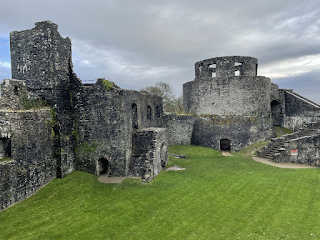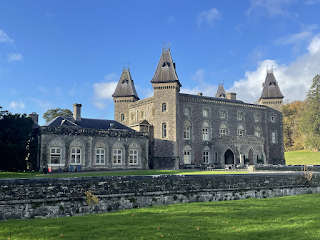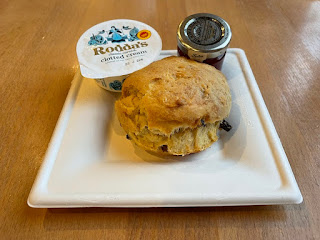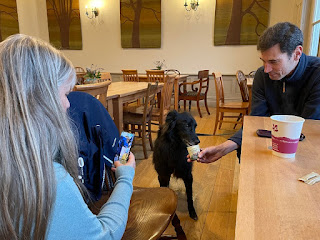I was scrolling through social media a few weeks ago when I saw the words "baristas" "training" "National Trust" and "exciting news next week". I don't want to say that I went into a panic but I went into a panic.
I discovered that Sandilands, a former golf course near Mablethorpe that the National Trust acquired in 2020, was opening a temporary tea facility. I went into Sherlock Holmes mode, examining the photos for any signs of scones.
I couldn't see any. Surely a temporary tea kiosk wouldn't serve scones? The Rules of the National Trust Scone Blog clearly state that if there are no scones, I don't need to include the property in this quest.
But I was wrong. The ever-helpful Sconepals did some slightly more in-depth investigating and let me know that scones were indeed on the menu. There was only one thing for it - I had to go to Mablethorpe.
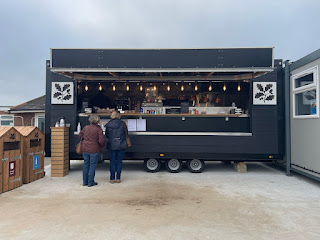 |
| A National Trust tea room on wheels. A potential game-changer. |
The National Trust is turning Sandilands into a nature reserve. It will cover 74 acres and will take years to complete. I have to say that although there wasn't much to see, it was interesting to see it in its formative state and know that in a few years it'll look totally different.
However, it does mean that there isn't a huge amount I can tell you about the place today. I can tell you that it was a links golf course with a par of 70 and a standard scratch of 69. I don't know what that latter part means but it might mean something to you.
It's a sad story though, as the golf club had almost reached its 125th year anniversary when it ran into financial difficulties and had to close. It's in a lovely spot though and it's good to know that the National Trust will be looking after it.
The Sandilands Scone
I decided to throw myself on the mercy of my family for this outing. They live in Northamptonshire, which was a blessing - Mablethorpe is one of their 'local' seaside resorts, even though it's over 2 hours away.
Even so, I broached the subject with a heavy heart, wondering a) how I was going to sell a trip to the seaside in November and b) what I was going to do if they said no.
But I was in luck, thanks to a very bizarre coincidence. It turned out that my sister's partner had had a dream many years ago that he went to Mablethorpe and journeyed around it on a monorail. He'd been looking for a reason to visit the place ever since and now I was giving him that reason.
Sadly, I couldn't give him his monorail, as there wasn't one. But we did have the beach, 2p slot machines, a seal sanctuary, fish and chips and a lot more besides.
The main event though was the Sandilands scone. It wasn't fresh but it was big and tasty. For the first time ever though, I found myself paying more attention to the toasted sandwiches that were on offer. In my defence, it was chilly and scones are not known for warming you up on a cold day.
What I am worried about is that, in theory, the National Trust could drag this portable tea room around the UK, parking up near every parcel of land they own, and say "exciting news next week!" and I'd have to go there. I'll spend the rest of my life like one of those tornado chasers in Oklahoma, except with scones. I will never finish.
But let's think positive! With the curveball of Sandilands volleyed into the stands of success, I'm back to just TWO more National Trust properties to go!
Sandilands: 3 out of 5 today Scone: 4 out of 5
Lure of the cheese toasties: 5 out of 5



